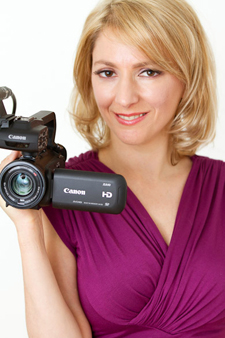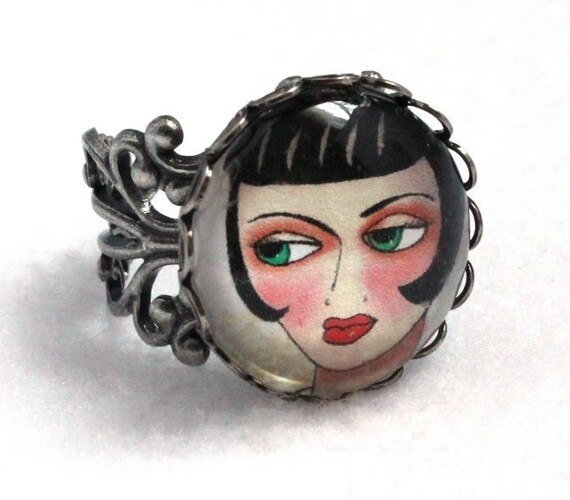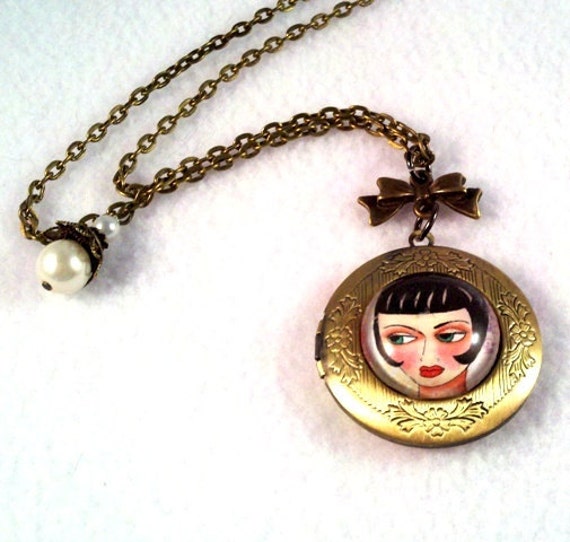Four Tips for Creating the Perfect Promo Video
Sure, you’ve got your web site, you’ve got your blog, you’ve got your Facebook page and your Twitter account, but do you have a promotional video?
You may be scratching your head with that one, wondering why an Etsy seller would ever create a video to promote his or her shop. But according to Michelle Lange of M Lange Media, a video is the perfect way a seller can tell the all-important story.
 |
| Michelle Lange |
While ideally, it would be wonderful to have a professionally shot video (a service Lange provides), one can do it using an ordinary camcorder and the help of a trusted friend who has a good eye.
Here’s what to focus on when shooting your own video.
Prepare your lighting. Obviously, you need to be well lit so that your audience can see you. Lange suggests placing two lights on either side of you about three feet away at a 45-degree angle so that the face is lit up clearly. Japanese lanterns work well, as the lighting is very soft, but ordinary shop lights with fluorescent bulbs from Home Depot can work, too.
“Be sure to play around with your lights and watch your footage so you can make sure you are not over-lit or under-lit,” Lange says. “Your basic lighting has to be right.” Lange has a tutorial on lighting yourself with Home Depot lights created by photographer Curtis Judd in her blog article “The First C of Effective Marketing Videos: CAPTURE!"
Frame the image properly. This means that your head should have about a quarter inch of space above it when one is looking at the video screen. And viewers should only see you from the chest up.
“This makes the shot more up-close and personal, which helps establish a stronger connection with your audience and creates a greater impact,” Lange says. “Common mistakes entrepreneurs make are framing themselves with several feet above their head and filming themselves from too far away. This makes our eyes wonder around the room and not focus on the person speaking.”
Make effective wardrobe and make-up choices. Lange suggests wearing clothes that are simple and streamlined. As the camera adds weight to the subject, avoid billowy fabrics, layers and ruffles. Also, don’t wear black, as it can look drab on film, nor white, as it can throw off the camera’s white balance.
“Find out which colors look best on you and wear those,” Lange says. “If you have pale skin, avoid bright, overpowering colors. Go with the medium shades like medium pink, blue, green, or purple, and avoid pale colors, which will wash you out. If you’re making a website video, be sure the colors don’t clash with the colors of your site.”
As for make-up, Lange suggests wearing the same amount you would for a business meeting—simple and pulled together. “The HD camera picks up every detail so wear the exact amount of make-up you would want to show up on video,” she says. “And be sure to powder your entire face before going on camera – including your eyelids and hairline. The lights produce a shine on the subject’s face, so using powder ensures that we pay attention to what you are saying and not to the shine.” .” Lange also states that both women and men should use powder to reduce the shine. Lange’s favorite is the HD powder by Makeup Forever, available at Sephora – this is created particularly for the HD camera, although she says that any good quality powder will do.
Have a friend interview you. Most likely, you’ll be way too uncomfortable to just speak into a camera directly, so have a friend stand just to the side of the camera, and have the off-camera friend ask you interview questions, much like what one sees in a news program or documentary. Speak directly to him or her instead of looking into the camera.
Obviously, have those questions prepared ahead of time, and try to speak in a conversational style when answering.
“It’s best to write out all your answers before you’re actually interviewed so that you can hone down exactly what you want to get across,” says Lange. “Read through those notes a bunch of times so that you’ll know your talking points. That way, once the camera starts rolling, you’ll look very natural.”
Have your friend ask questions about your process, what inspires you to create your work, and the benefits your clients experience from your products or services. While you’re talking, cut away to some visuals of your items, which would most likely require the help of a video editor, or a particularly skilled friend.
“A camera is such an odd thing,” Lange says. “We’re not brought up speaking in front of an inanimate object, so an anxiety response is normal. Like anything, talking on camera is a learned skill, but the more relaxed you get with it, the more your story will come through. Art is at its most fascinating when we know the story behind it.”
Lange’s company not only creates videos for entrepreneurs, but she’s also a video coach. She offers a complimentary 30-minute video strategy session to help sellers find out how they can increase their visibility, credibility and revenue through video. Email: michelle@mlangemedia.com; phone: 310-876-1362.
Until next time!
Mary Ann
 |
| The Brooks Ring. The shop: www.maryannfarley.etsy.com. |


